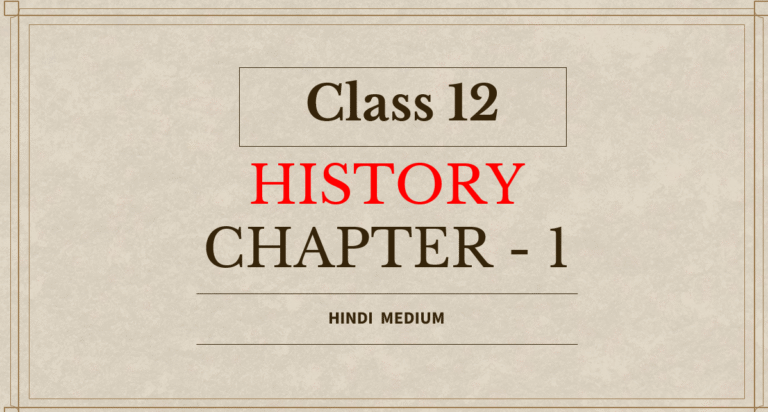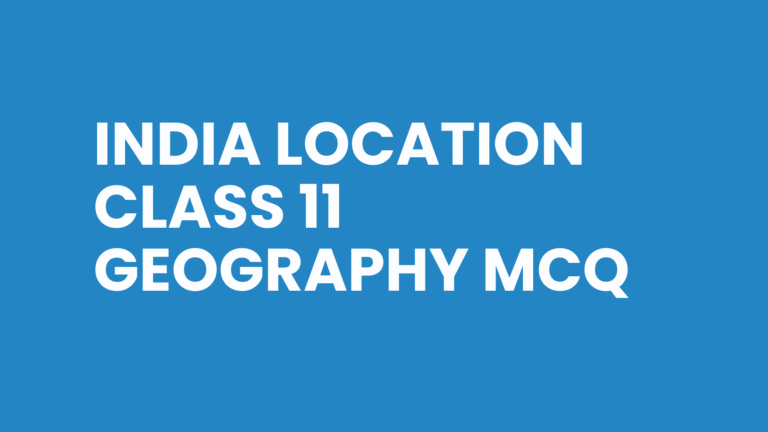Class 12 History Chapter 3 MCQ | Kinship, Caste and Class Important MCQ
This article of THE SOCIAL CLASS will provide you with the Class 12 history Chapter 3 MCQ test. It is very helpful for Class 12 board students who are preparing for their 2026 board exams and wish to grab good grades in their exams. You can use this MCQ of Class 12 History Ch 3 Kinship, Caste and Class for your study purposes. This article contains a total of 30 questions, with answers provided below. You can check out our YouTube channel, too.

Class 12 History Chapter 3 MCQ – Kinship, Caste And Class
Here in this part, you will get the top 30 most important Class 12 History Chapter 3 MCQ. Class 12 History Chapter 3 MCQ | Kinship, Caste and Class Important MCQ
Class 12 History – Themes in Indian History Part I, Chapter 3: Kinship, Caste and Class 30 most important MCQs
30 Important Class 12 History Chapter 3 MCQ
Q1. Which text is the most important source for reconstructing social history of early India?
A. Rigveda
B. Mahabharata
C. Manusmriti
D. Ramayana
Answer: B. Mahabharata
Q2. The term Gotra in early societies referred to:
A. A lineage or clan traced through male ancestors
B. Village settlement
C. Occupational group
D. A unit of army
Answer: A. A lineage or clan traced through male ancestors
Q3. Who is believed to be the original composer of the Mahabharata?
A. Valmiki
B. Vyasa
C. Vishnu Sharma
D. Kalidasa
Answer: B. Vyasa
Q4. Which concept regulated marriage rules in Brahmanical texts?
A. Jati
B. Gotra exogamy
C. Endogamy
D. Varna system
Answer: B. Gotra exogamy
Q5. The word Dasa in Rigvedic society later came to mean:
A. Slave
B. Farmer
C. Warrior
D. Merchant
Answer: A. Slave
Q6. The fourfold Varna system is first clearly mentioned in:
A. Rigveda (Purusha Sukta)
B. Ramayana
C. Arthashastra
D. Mahabharata
Answer: A. Rigveda (Purusha Sukta)
Q7. Which Varna was considered outside the Varna system?
A. Vaishya
B. Kshatriya
C. Shudra
D. Untouchables (Chandala)
Answer: D. Untouchables (Chandala)
Q8. The Manusmriti is a text dealing with:
A. Political administration
B. Dharma and social norms
C. Agriculture
D. Military science
Answer: B. Dharma and social norms
Q9. What does the term Patriliny mean?
A. Descent traced through the father
B. Descent traced through the mother
C. Matrilocal residence
D. Polyandry system
Answer: A. Descent traced through the father
Q10. In the Mahabharata, the Pandavas and Kauravas fought the battle of:
A. Kurukshetra
B. Panipat
C. Rajagriha
D. Magadha
Answer: A. Kurukshetra
Q11. Which dynasty is mentioned in the Mahabharata as a major ruling lineage?
A. Maurya
B. Sunga
C. Kuru
D. Gupta
Answer: C. Kuru
Q12. The eldest son inheriting his father’s property is known as:
A. Primogeniture
B. Coparcenary
C. Partition
D. Dayabhaga
Answer: A. Primogeniture
Q13. The practice of brothers inheriting property together is called:
A. Endogamy
B. Exogamy
C. Coparcenary
D. Primogeniture
Answer: C. Coparcenary
Q14. Which of the following texts is NOT related to Dharmashastras?
A. Manusmriti
B. Yajnavalkya Smriti
C. Arthashastra
D. Narada Smriti
Answer: C. Arthashastra
Q15. The term Janapada means:
A. Land of a tribe or people
B. Military formation
C. Religious sacrifice
D. Royal palace
Answer: A. Land of a tribe or people
Q16. Which social group is referred to as “twice-born”?
A. Brahmana, Kshatriya, Vaishya
B. Brahmana, Vaishya, Shudra
C. Kshatriya, Vaishya, Shudra
D. Only Brahmana
Answer: A. Brahmana, Kshatriya, Vaishya
Q17. Who among the following could not participate in sacrifices (yajnas)?
A. Brahmanas
B. Kshatriyas
C. Shudras
D. Vaishyas
Answer: C. Shudras
Q18. Polyandry is a practice where:
A. A woman has multiple husbands
B. A man has multiple wives
C. A man and woman live without marriage
D. Marriage within same Gotra
Answer: A. A woman has multiple husbands
Q19. Whose story in the Mahabharata shows the practice of polyandry?
A. Kunti
B. Draupadi
C. Gandhari
D. Subhadra
Answer: B. Draupadi
Q20. The epic Mahabharata was originally composed in:
A. Prakrit
B. Sanskrit
C. Tamil
D. Pali
Answer: B. Sanskrit
Q21. The concept of Ashrama refers to:
A. Life stages in Brahmanical tradition
B. Types of sacrifice
C. Varna-based occupations
D. Lineages of kings
Answer: A. Life stages in Brahmanical tradition
Q22. Which Ashrama stage was devoted to education and learning?
A. Grihastha
B. Brahmacharya
C. Vanaprastha
D. Sanyasa
Answer: B. Brahmacharya
Q23. According to Dharmashastras, which Varna was expected to study and teach the Vedas?
A. Kshatriya
B. Vaishya
C. Brahmana
D. Shudra
Answer: C. Brahmana
Q24. The Mahabharata is also described as:
A. Itihasa (epic history)
B. Kavya (poetry)
C. Smriti
D. Shastra
Answer: A. Itihasa (epic history)
Q25. Which Smriti text mentions rules for inheritance and family property?
A. Manusmriti
B. Arthashastra
C. Mahabharata
D. Rigveda
Answer: A. Manusmriti
Q26. The Shudras were assigned which occupation according to the Varna system?
A. Agriculture
B. Warfare
C. Service to upper Varnas
D. Teaching Vedas
Answer: C. Service to upper Varnas
Q27. Who among the following challenged Brahmanical ideas through Buddhism?
A. Ashoka
B. Gautama Buddha
C. Mahavira
D. Ajatashatru
Answer: B. Gautama Buddha
Q28. Genealogies in early societies were important to:
A. Legitimize rulers’ power and social position
B. Record crop production
C. Maintain tax records
D. Train warriors
Answer: A. Legitimize rulers’ power and social position
Q29. The earliest evidence of female scholars in Vedic tradition is from:
A. Upanishads
B. Rigveda
C. Smritis
D. Ramayana
Answer: B. Rigveda
Q30. The Mahabharata finally took its written form around:
A. 4th century BCE
B. 1st century CE
C. 4th century CE
D. 7th century CE
Answer: C. 4th century CE
Conclusion
This article provided you with Class 12 History Chapter 3 MCQ, which are very important for your exams. read them and make sure to get good marks.






One Comment